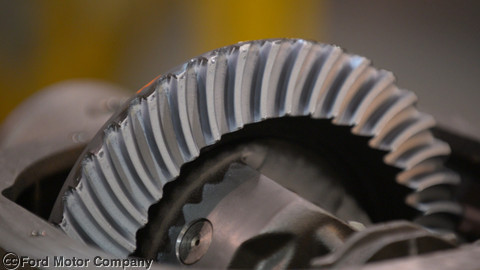Ford’s photogrammetric pattern reader stitches together thousands of images to ensure quality
The nation’s second-largest automaker, Ford Motor Company, said it is using 3D mapping in what is believed to be the technology’s first application in the auto industry to better analyze rear axle parts of pickups during assembly for a smoother, quieter ride.
Dearborn, Mich.-based Ford, with $36 billion in annual revenue, is using a photogrammetric pattern reader (PPR) at an axle plant in nearby Sterling Heights, employing two digital cameras and infrared lights to capture 9,000 1024×1-pixel images from each side of every F-Series pickup’s gear tooth as the gears rotate.
The image processing software contains a digital model of the gear profile that is then used to stitch these images together and flatten out the gear teeth into a single 3D panoramic image that can easily be scanned to ensure the teeth are meshing correctly during assembly.
Any parts that show anomalies that could cause noise or durability issues are scrapped. On average, only two to five parts per every 1,000 parts fall outside the tight tolerance range for acceptability, Ford said.
Now PPR stations are being rolled out in Ford plants worldwide.
“PPR technology is the next evolution in quality control for our commercial trucks,” said David Gravel, an engineer in Ford’s advanced manufacturing group. “While traditional, visual inspections of our axle gears ensure we’re delivering dependable, tough trucks to our customers, this new technology allows us to conduct our inspections faster, and at a level of detail the human eye just cannot discern.
The PPR system was developed with Madison, Wis.-based Automated Vision and ATM Automation in Livonia, Mich.
“This technology is part of a trend where companies like Ford are using advanced automation to increase accuracy and consistency in production,” said Nan Zhang, a scientist at Automated Vision. “Computer vision is booming and is a very important topic for the next decade.”






